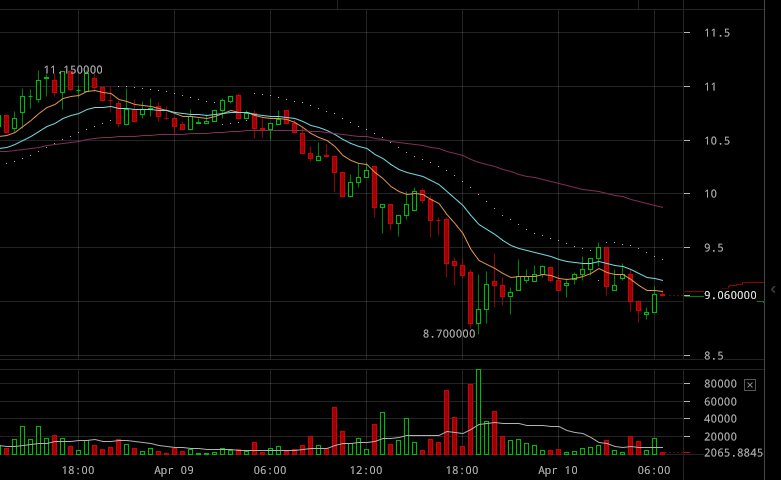Litecoin fell by some 20% earlier today after segwit’s network share decreased to around 63% following rumors that Antpool was to bring in new hash-power to maintain segwit below its activation threshold of 75%.
This follows a confusing series of events where Charlie Lee said BW was not going to signal for segwit, BW said they had not yet decided, Wang Chun, co-founder of F2Pool, said he was re-considering signaling for segwit, Lee said F2pool will actually keep signaling.
Price fell from around $12.50 to $8.70 as traders seemingly speculated the coin was going no-where without the segwit hype. Now, uncertainty has increased even more as litecoin developers say they are to go ahead with a flag day fork otherwise known as UASF.
Litecoin’s price falls as uncertainty increases – image from cryptowatch
Xinxi Wang, a Litecoin developer, apparently confirmed they will merge a flag-day soft-fork, saying “we will do it. It’s enough. We’ve done quite a lot and showed our sincerity and humbleness.”
Charlie Lee, Litecoin’s founder, publicly stated: “if you support SegWit on Litecoin, talk to your wallets and exchanges about supporting UASF.” Suggesting that for the first time ever in the cryptospace, developers may unilaterally decide what feature is to go ahead.
How exactly a flag-day soft-fork would work is not clear as it has never happened before. Vitalik Buterin has said it has all the disadvantages of a hard-fork, but none of its benefits. Jihan Wu has said it would lead to a split into two or three coins.
As such, many saw it simply as a bluff, but a pull-request has been opened. If the maintainer does merge it, it may considerably change the dynamics as the miner’s role would be put into question. Some who currently signal segwit may change their mind, while others may resist it to avoid the precedent.
The coin, therefore, may split and in the case of segwit transactions they may even be re-spendable by miners, creating chaos. Conceptually, a flag day soft-fork denies a voice to nodes as those who do not upgrade have no choice in the matter.
For miners, there is no such thing as a soft-fork. All forks are hard-forks as far as miners are concerned. If miners are split, two chains will be created as has been the case many times for bitcoin when soft-fork upgrades go wrong.
When there are two chains in this sort of situation, transacting is strongly discouraged because there will be chain re-organization. That is, the blocks and money spent in one chain will, at some point, metaphorically vanish with only blocks/txs in the winning chain counting.
Since litecoin would be bringing bitcoin’s politics to its currency, in this sort of situation we may expect a hashpower race. Those against segwit, for example, may start with less hashpower, but might pour in money, and even overtake the segwit chain.
Exchanges, here, would have significant say, but if they declare the longest chain is irrelevant, then the entire currency is put into question as we would need to ask why require miners at all instead of replacing it with developers who administrate a database?
In short, the whole thing is a mess. Conceptually, if it is indeed merged, we would not really be able to say any longer that the currency is decentralized as the maintainer would have significant power to change whatever parameter with no or very weak mechanisms to keep its potential abuse in check.
Featured image from Shutterstock.















